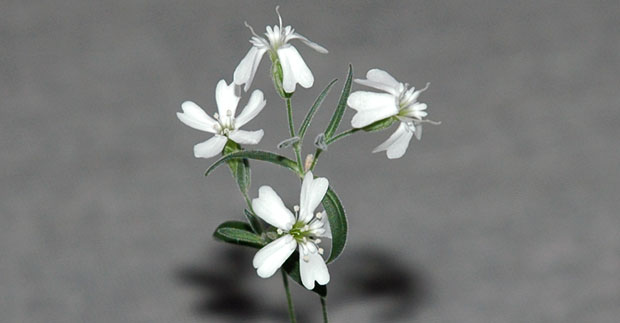Siberian ice age flower is reborn
No word yet on whether they plan to try and extract dinosaur DNA from a mosquito preserved in amber.
About 32,000 years ago in Siberia, a squirrel industriously hoarded a whole lot of seeds and fruits in a river bank. Last winter, a team of Russian scientists coaxed some of the seeds into blooming in the lab, and an ancient white flower has been brought back to life.
In 1995, Russian researchers studying ancient soil composition ran across about 70 squirrel burrows from Upper Pleistocene rodents. Each burrow was packed full of stored seeds, nuts, and fruits - some burrows held up to 800,000 ancient treats. The squirrels never returned to claim their spoils, but the researchers found that some of the buried plant material was still viable.
The burrows were located below the permafrost line, where the ground remains frozen year round. In the burrow chambers the conditions were stable: they were 125 feet below the ground level, and kept at a constant temperature of about 20 degrees. It was perfect storage conditions, cool and dry and dark, except for one thing: the rock walls around the burrow contain radioactive elements, which would have slowly bombarded the seeds with radiation over the eons. Not much radiation, granted, but 32,000 years is enough time for a lot to accumulate.
Researcher Svetlana Yashina took on the task of reconstituting the seeds. She took tissue from inside immature, unsprouted fruits. She soaked this tissue in a liquid growth medium that gradually brought them back to life. In laboratory conditions carefully calibrated to resemble those of Ice Age Siberia, she coaxed the tissue into sprouting, and then flowering. After cross-pollinating the plants, she verified that the plants were all fertile, and had created the second generation.
This particular flower, S. stenophylla, still blooms on the Siberian plains. But the ancient variety which Yashina reconstituted has several differences from the modern plant. It is a fascinating look at plant evolutionary biology; most of us think of the evolution of dinosaurs and woolly mammoths, but plants have been evolving too. These older plants grow slower roots, but produce larger flowers and more buds.
The race is on to find ancient plants preserved in this fashion. Climate change means that the permafrost line is dropping, causing millions of acres of land to thaw deeper than ever before. If the thaw reaches these caches, they will rot and become unviable.
In the wake of this success, researchers have announced that they will return to the site to look for the preserved remains of even older plants. No word yet on whether they plan to try and extract dinosaur DNA from a mosquito preserved in amber.
